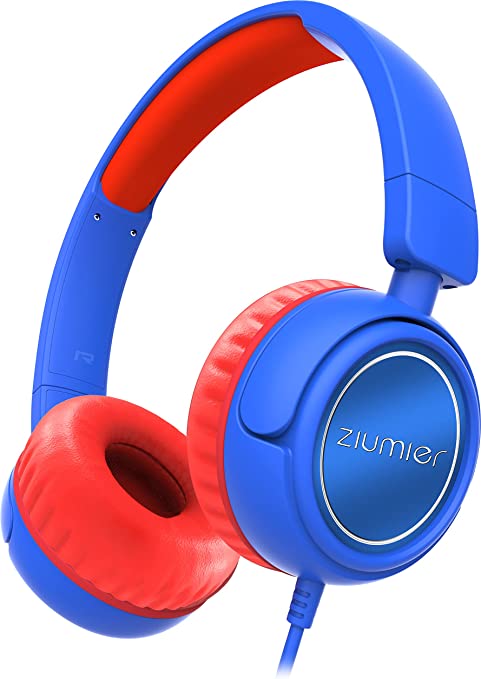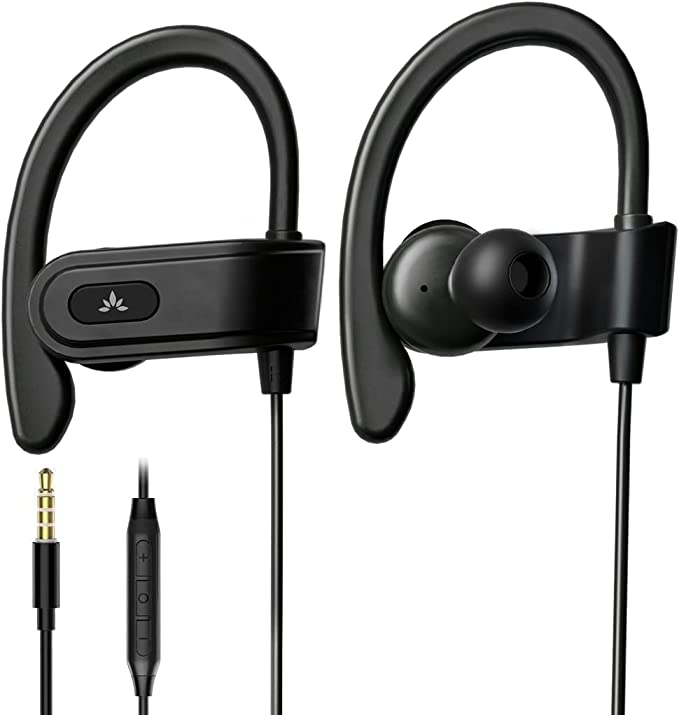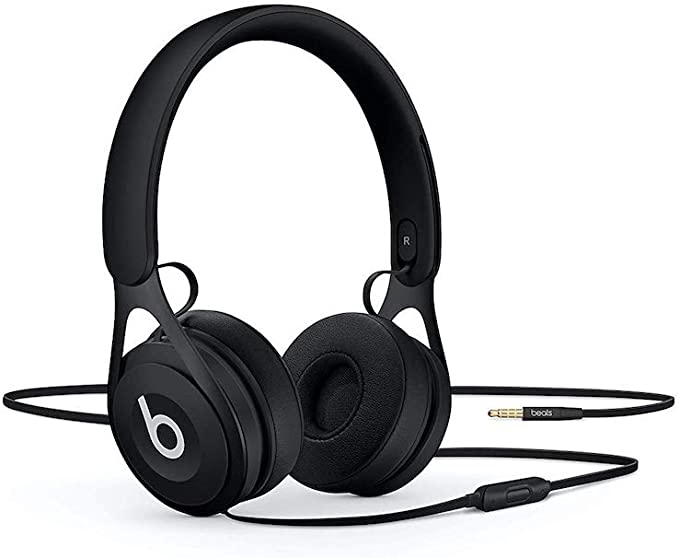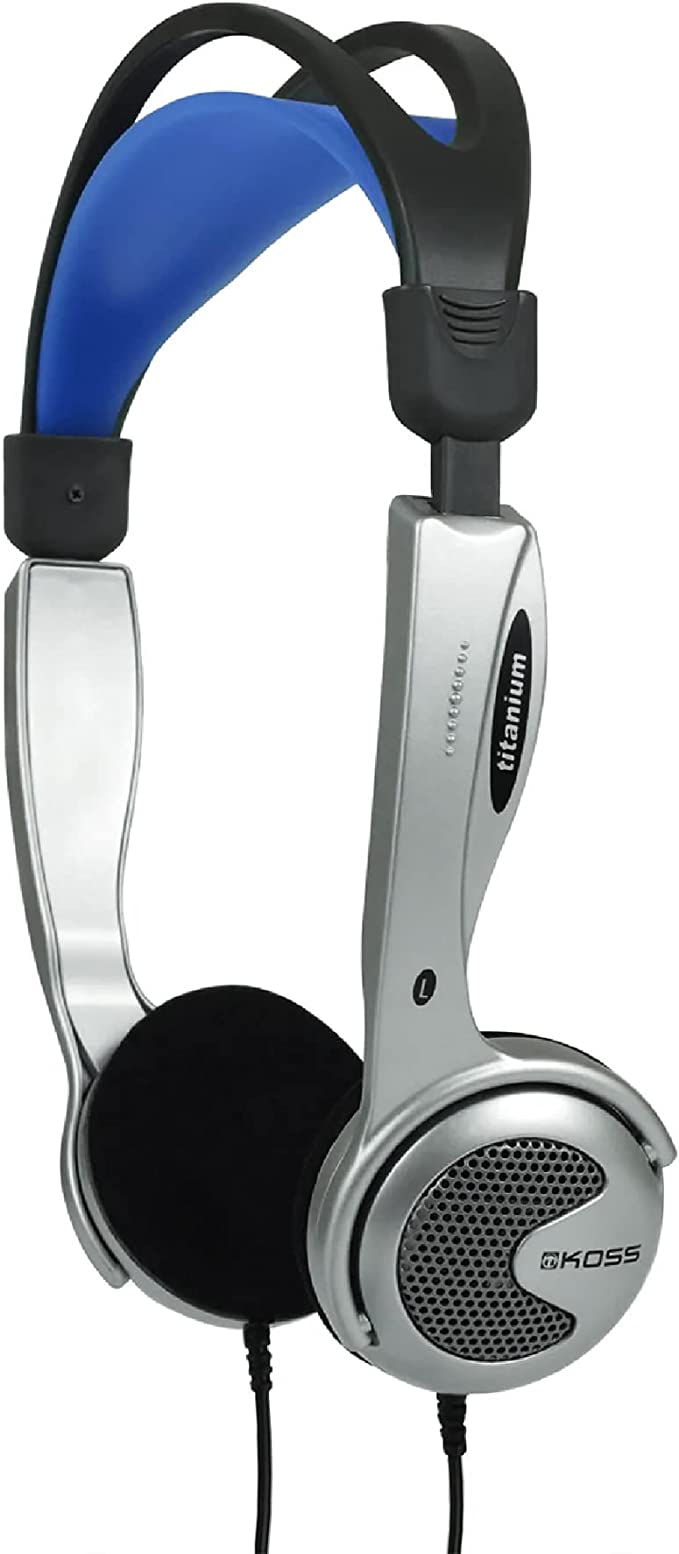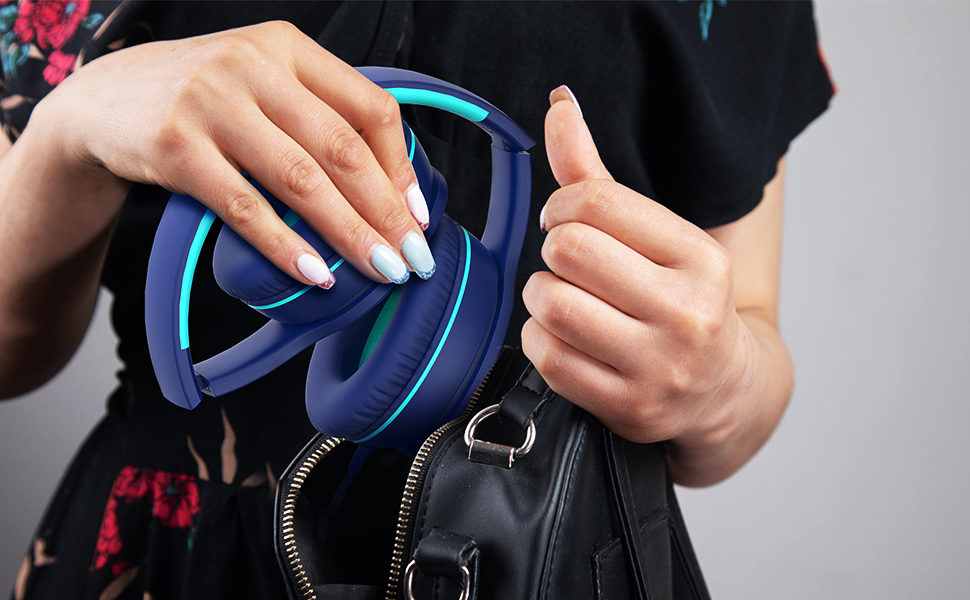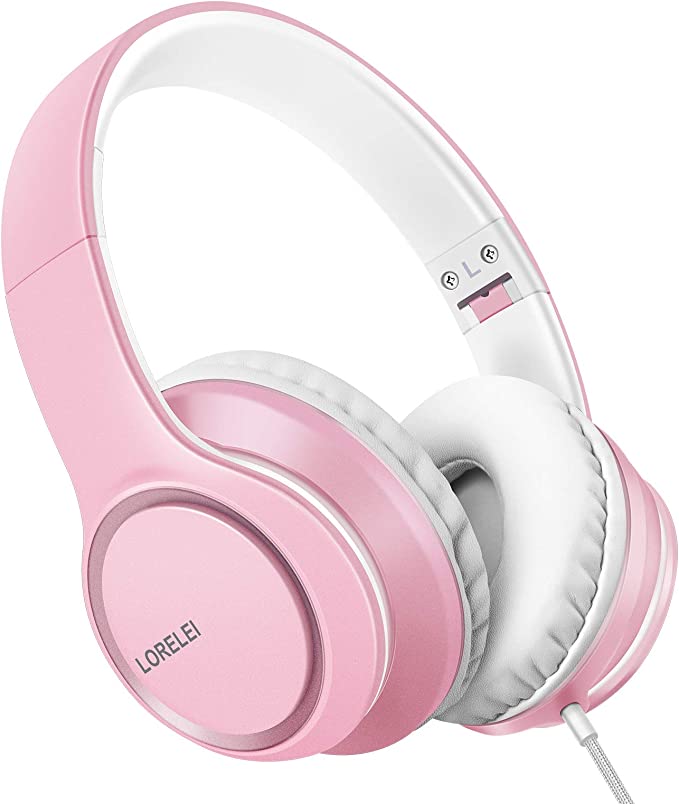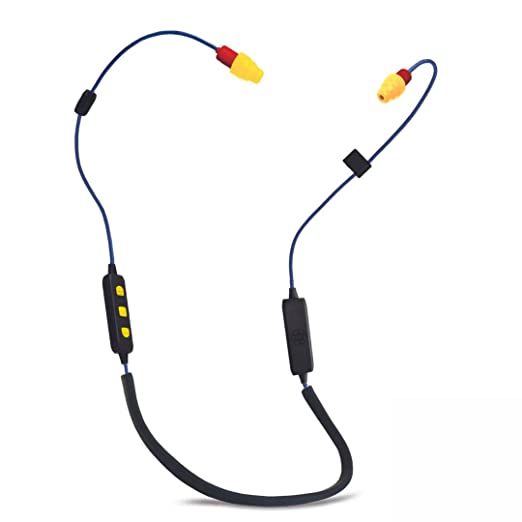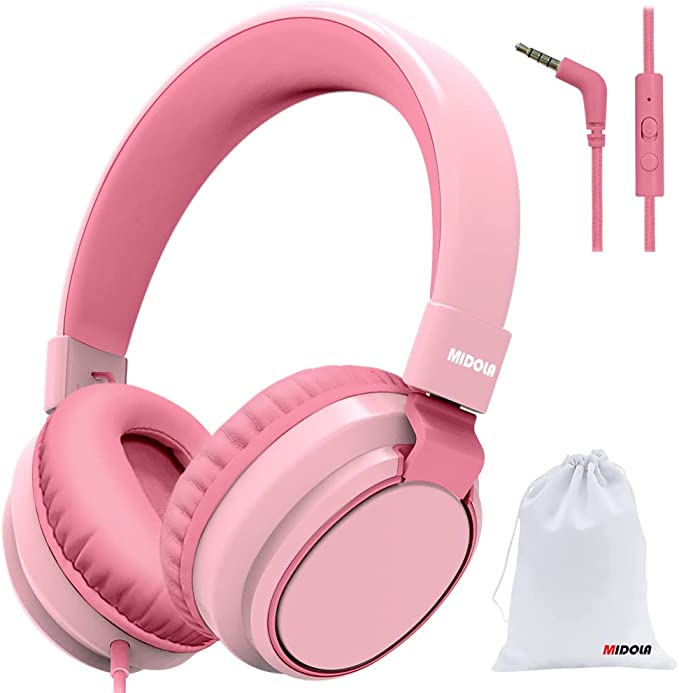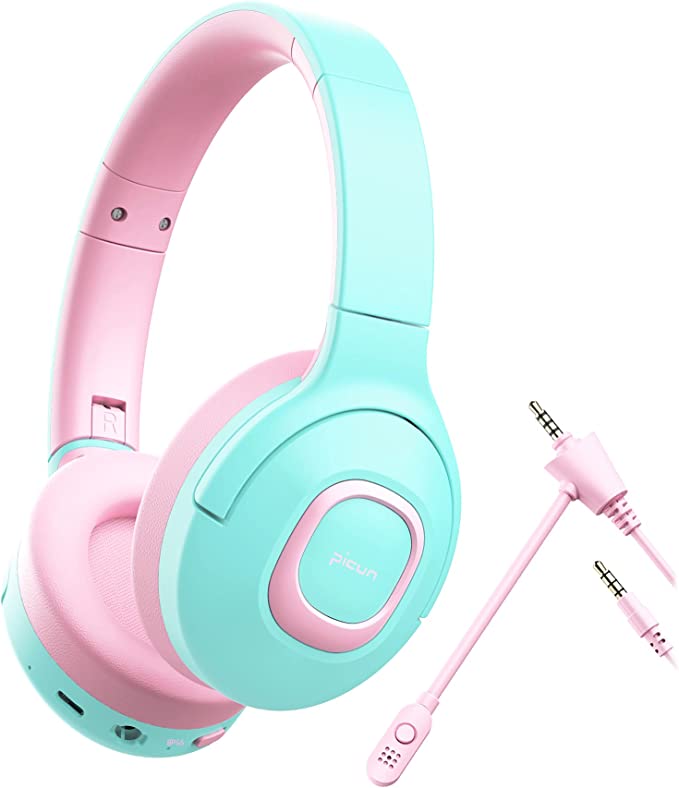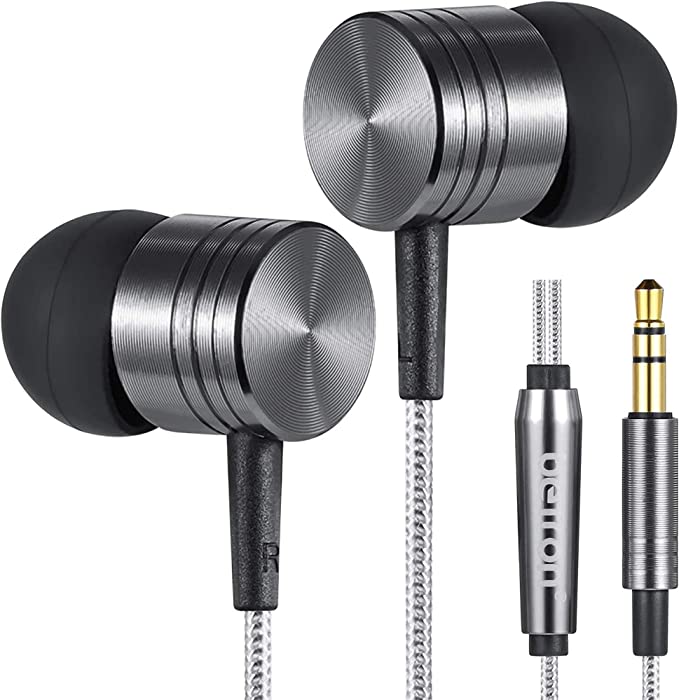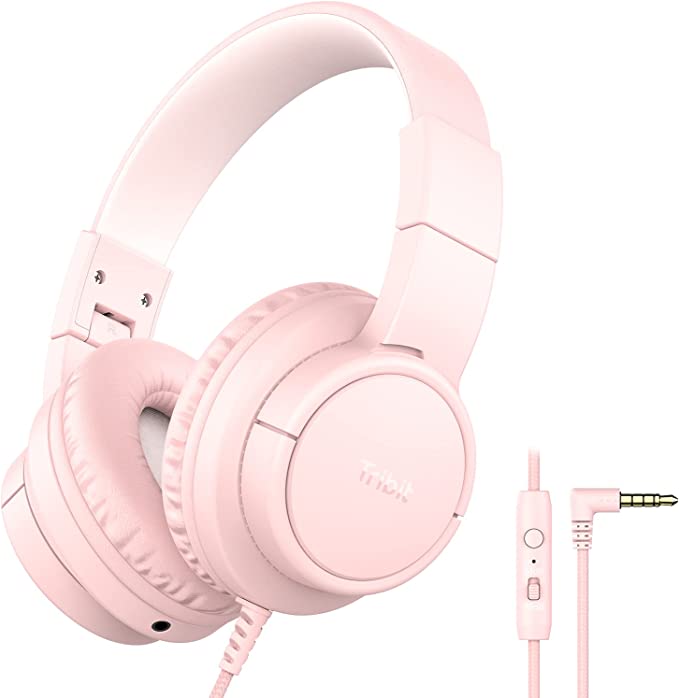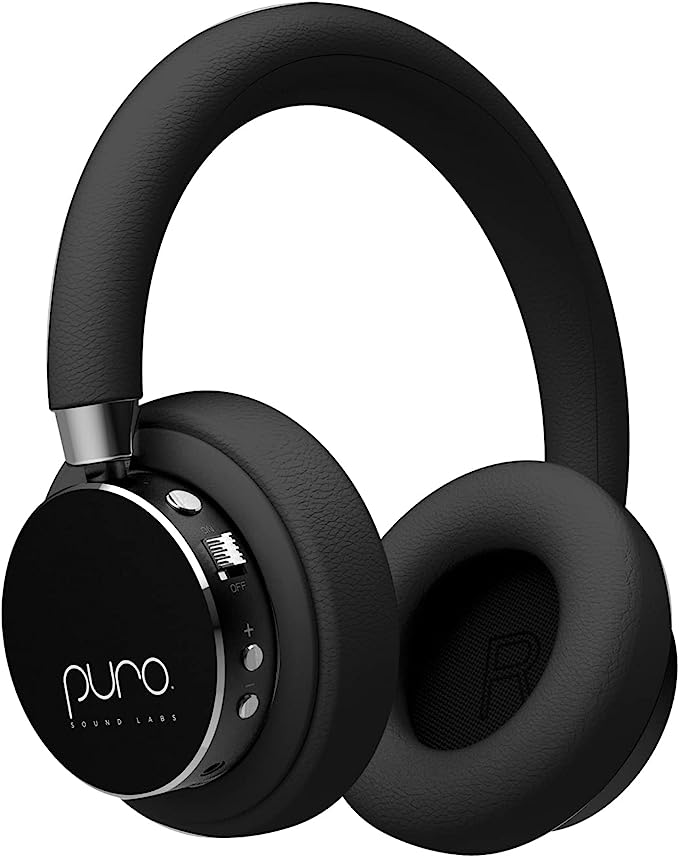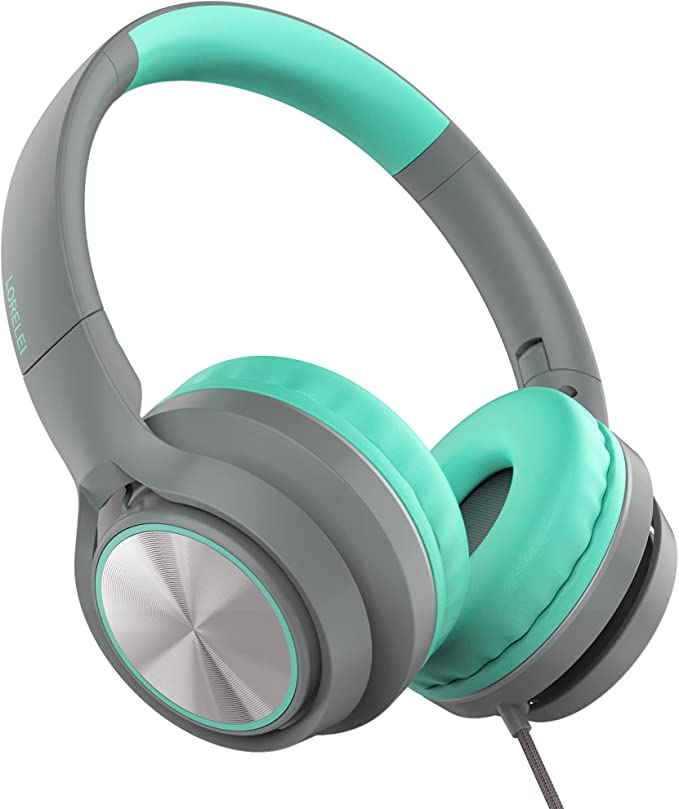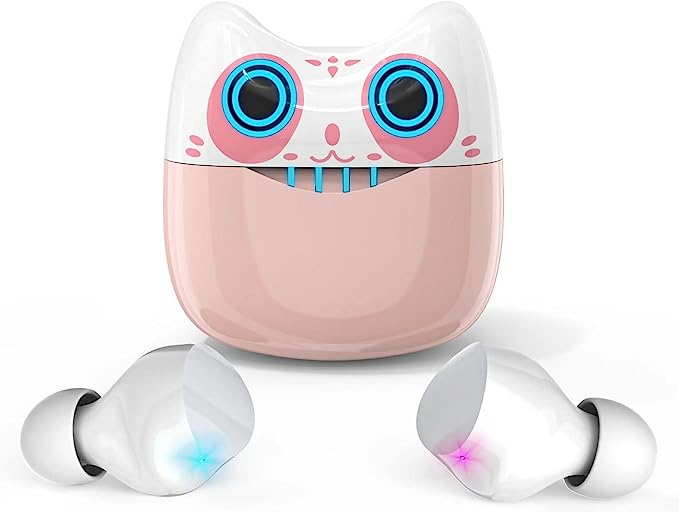GOGOSINIS E306-Ear-Fairy Tale: Safe and Fun Wired Earbuds for Kids
Update on March 21, 2025, 8:58 a.m.
The world is full of sounds – the gentle rustling of leaves, the cheerful chirping of birds, the infectious laughter of children playing. But amidst these beautiful sounds, there’s a silent threat to our children’s hearing: noise-induced hearing loss. It often starts subtly. Maybe a child asks you to repeat things more often, or perhaps they turn up the volume on the TV or their headphones higher than usual. These seemingly small changes can be early warning signs of a much larger problem. Unlike a scraped knee or a bruised elbow, hearing damage is often invisible and painless, making it easy to overlook until it’s too late.
The Science of Sound and Little Ears: A Delicate Dance
To understand how to protect our children’s hearing, we first need to understand how hearing works. It’s a fascinating and intricate process. Sound, in its essence, is vibration. When an object vibrates – like a guitar string or a vocal cord – it creates waves of pressure that travel through the air. These waves reach our ears, where a remarkable series of events unfolds.
First, the outer ear, the part we see, funnels these sound waves into the ear canal. The waves then hit the eardrum, a thin membrane that vibrates like the head of a drum. These vibrations are transmitted through three tiny bones in the middle ear – the malleus, incus, and stapes (often called the hammer, anvil, and stirrup because of their shapes). These bones act as an amplifier, boosting the sound vibrations before sending them on to the inner ear.
The inner ear houses the cochlea, a snail-shaped, fluid-filled structure lined with thousands of tiny hair cells. These hair cells are the true heroes of hearing. As the amplified sound vibrations reach the cochlea, the fluid inside moves, causing the hair cells to sway. This movement is converted into electrical signals that travel along the auditory nerve to the brain, where they are interpreted as sound.
Here’s the crucial point: these hair cells are incredibly delicate. Exposure to loud sounds can damage or even destroy them. And unlike many other cells in our body, hair cells don’t regenerate. Once they’re gone, they’re gone for good. This is why noise-induced hearing loss is permanent.
Now, let’s talk about decibels (dB). The decibel scale is a way of measuring the intensity of sound. It’s a logarithmic scale, which means that an increase of 10 dB represents a tenfold increase in sound intensity. For example, a sound at 60 dB is ten times more intense than a sound at 50 dB, and a sound at 70 dB is 100 times more intense than a sound at 50 dB.

Why 85dB Matters: The Gold Standard for Safe Listening
The World Health Organization (WHO) and other leading health organizations recommend a maximum listening level of 85 dB for children to prevent noise-induced hearing loss. https://www.who.int/news-room/fact-sheets/detail/deafness-and-hearing-loss This isn’t an arbitrary number. It’s based on extensive research into the effects of noise exposure on hearing. Prolonged exposure to sounds above 85 dB can damage the delicate hair cells in the cochlea, leading to gradual and irreversible hearing loss. To provide a tangible reference, 85 dB is roughly equivalent to the sound of a loud, hand-held hair dryer,or heavy traffic from inside the car. It’s loud enough to enjoy audio content, but quiet enough to protect.
It’s important to note that the duration of exposure is also critical. The longer a child is exposed to loud sounds, the greater the risk of damage. The “safe” listening time decreases as the volume increases. While 85 dB is considered safe for extended periods, exposure to sounds above 100 dB (like a rock concert or a power tool) can cause damage in just a few minutes.
Beyond Volume: Other Earphone Considerations
While volume limiting is paramount, it’s not the only factor to consider when choosing headphones for children.
-
Fit and Comfort: Children’s ears are smaller than adults’, and a poorly fitting earphone can be uncomfortable and even cause pain. Look for headphones specifically designed for children, with smaller ear tips or ear cups. The GOGOSINIS E306, for example, includes two different sizes of soft, silicone ear tips to ensure a snug and comfortable fit for a wider range of ages. A good fit also helps to block out external noise, which means the child won’t need to turn up the volume as high to hear clearly.
-
Material Safety: Children often put things in their mouths, so it’s crucial that the materials used in headphones are non-toxic and safe. Look for headphones that meet safety standards like RoHS (Restriction of Hazardous Substances) and CPSIA (Consumer Product Safety Improvement Act). These certifications ensure that the product is free from harmful chemicals like lead, mercury, and phthalates. The materials should also be durable and easy to clean.
-
In-Ear vs. Over-Ear: Both in-ear and over-ear headphones can be safe for children, as long as they have volume-limiting features. However, in-ear headphones, when properly fitted, can offer better noise isolation, meaning the child can hear clearly at lower volumes.
Introducing the GOGOSINIS E306: A Closer Look
The GOGOSINIS E306-Ear-Fairy Tale wired earbuds are designed with the principles of safe listening and child-friendly features in mind. Let’s examine some of its key characteristics:
-
85dB Volume Limiting: As discussed, this is the most crucial feature. The E306 incorporates built-in technology that restricts the sound output to a maximum of 85 dB, protecting young ears from potentially damaging sound levels. This is achieved through passive resistance within the circuitry, preventing the headphones from exceeding the safe limit, regardless of the device’s volume setting.
-
Smaller Size and Lightweight Design: The E306 earbuds are specifically designed for smaller ears. They are lightweight and ergonomically shaped to fit comfortably and securely, even during extended use. The inclusion of two different sizes of soft, silicone ear tips allows for a customized fit, ensuring both comfort and optimal sound isolation.
-
Durable and Easy to Clean: The E306 uses Gold-plated 3.5mm plug, it is more durable.The smooth surfaces of the earbuds and the included carrying case are easy to wipe clean, an important consideration for hygiene.
-
3.5mm Jack Compatibility: The standard 3.5mm headphone jack ensures compatibility with a wide range of devices, including smartphones, tablets, laptops, computers, and portable gaming consoles like the Nintendo Switch. This versatility makes the E306 a practical choice for various listening situations.
-
Carrying Case with Carabiner and Mesh Pocket: The included carrying case is not just for aesthetics. It provides a convenient and safe way to store the earbuds when not in use, preventing damage and tangling. The carabiner allows children to easily attach the case to their backpacks or bags, reducing the risk of loss. The mesh pocket inside the case is perfect for storing the cable, a small charger, or other small items.
-
“High-Quality Sound” & “HI-FI Cable”: While the primary focus is on safety, the GOGOSINIS E306 doesn’t completely neglect sound quality. The term “High-Quality Sound” suggests that the headphones are designed to deliver clear and balanced audio within the safe volume range. “HI-FI Cable” refers to High Fidelity, which is generally means the accurate reproduction of sound. In practical terms for these headphones, this likely translates to a cable designed to minimize signal loss and interference, contributing to a cleaner audio signal. This isn’t about delivering booming bass or extreme loudness; it’s about providing a clear and enjoyable listening experience without compromising hearing health. The Gold-plated 3.5mm plug, also ensures better signal transmission.
-
Soft Earplugs and Noise Isolation: The use of soft, silicone earplugs is crucial for both comfort and noise isolation. Silicone is a hypoallergenic material that is gentle on the skin, minimizing the risk of irritation. A good seal with the ear canal helps to block out ambient noise, allowing the child to hear the audio clearly at a lower volume setting. This is particularly beneficial in noisy environments like classrooms or during travel.
It’s worth clarifying the terms “Multi-core technology” and “Surround Sound,” which appeared in the original product description. These terms are often used in marketing and can be misleading. In the context of the GOGOSINIS E306, “Multi-core technology” likely refers to the internal wiring of the headphones, which is not the technical use case. Similarly, “Surround Sound” in this context almost certainly refers to simulated surround sound, achieved through audio processing, rather than true multi-driver surround sound (which would be highly unusual and unnecessary in children’s headphones). The headphones are designed to provide a clear and balanced stereo sound experience, optimized for safe listening levels.
Creating Healthy Listening Habits: A Partnership for Life
Choosing safe headphones is a crucial first step, but it’s equally important to instill healthy listening habits in children. Here are some practical tips for parents:
- The 60/60 Rule: Encourage children to listen at no more than 60% of the maximum volume for no more than 60 minutes at a time. This is a simple guideline that can help prevent excessive exposure to loud sounds.
- Take Breaks: Remind children to take regular breaks from listening to audio, even at safe volumes. This gives their ears a chance to rest and recover.
- Model Good Habits: Children learn by example. Be mindful of your own listening habits and demonstrate safe practices.
- Talk About It: Have open and honest conversations with your children about the importance of hearing protection. Explain how loud sounds can damage their hearing and why it’s important to listen responsibly.
- Make it Fun: Turn hearing protection into a game or a challenge. For example, you could have a “quiet listening” contest to see who can enjoy their audio at the lowest volume.
- Control the environment: Keep sound level moderate at home.
Early Detection and Intervention: Listening for the Warning Signs
Even with the best precautions, hearing loss can sometimes occur. Early detection is crucial for minimizing the long-term impact. Here are some signs of potential hearing loss in children:
- Asking for Repetition: Frequently asking “What?” or “Huh?”
- Turning Up the Volume: Consistently increasing the volume on the TV, radio, or headphones.
- Difficulty Understanding Speech: Struggling to follow conversations, especially in noisy environments.
- Speech Delays or Problems: Having difficulty pronouncing words or developing language skills at the expected pace.
- Inattentiveness: Appearing to be easily distracted or not paying attention.
- Ringing in the Ears (Tinnitus): Complaining of buzzing, ringing, or other noises in their ears.
If you notice any of these signs, it’s important to consult a doctor or audiologist. They can perform a hearing test to determine if there is a problem and recommend appropriate interventions. Early intervention can make a significant difference in a child’s development and overall well-being. Hearing tests are typically quick, painless, and non-invasive.
Conclusion: A Sound Future
Protecting our children’s hearing is an investment in their future. By choosing safe headphones like the GOGOSINIS E306, and by instilling healthy listening habits, we can help them enjoy the sounds of the world for years to come. Remember, hearing loss is often preventable, and it’s never too early to start protecting those precious little ears. The gift of sound is a precious one; let’s work together to ensure that our children can experience it fully and safely throughout their lives. By understanding the science of sound and making informed choices, we can empower our children to enjoy a lifetime of clear and vibrant hearing.
